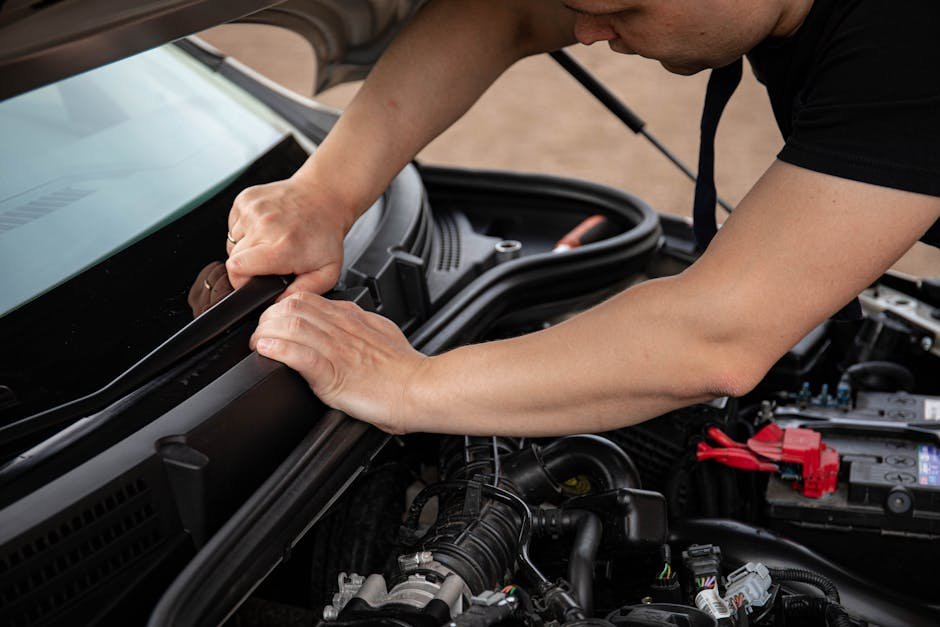The Truth Behind Windshield Glass Durability and When to Repair
/Windshield glass is more than just a piece of your vehicle; it's a critical safety feature that protects you from the elements, road debris, and in the event of an accident, helps maintain the structural integrity of your vehicle. But what makes windshield glass so resilient, and how can you tell when it's time for a repair? Dive into the science behind windshield durability and the signs that signal a need for professional attention.
Understanding Windshield Glass Composition
Windshield glass isn't just any ordinary glass; it's a marvel of engineering designed to withstand significant impact and protect passengers. Comprised of laminated glass, a typical windshield features two layers of glass sandwiching a thin layer of polyvinyl butyral (PVB). This special construction ensures the glass remains largely intact upon impact, preventing shards from entering the vehicle's cabin and causing injury. The resilience of windshield glass is largely due to this intricate layering, showcasing the advanced technology behind everyday safety features in modern vehicles.
The strength and durability of windshield glass are paramount, but its transparency and clarity are equally important. Advances in manufacturing have led to windshields that not only protect but also offer superior visibility. Special coatings can also be applied to enhance sun protection and reduce glare, further improving the driving experience. This dual focus on safety and functionality underscores the sophistication behind windshield glass technology.
Factors That Affect Windshield Durability
While windshield glass is designed to be tough, various factors can affect its durability over time. Temperature fluctuations, for instance, can cause expansion and contraction of the glass, potentially leading to cracks. Physical impacts, such as gravel or debris from the road, can create chips or cracks that compromise the structural integrity of the windshield. Other factors, such as the quality of the glass and the installation process, also play critical roles in determining the overall durability of the windshield. Proper maintenance and timely repairs are crucial in mitigating these risks and ensuring the windshield's longevity.
Signs Your Windshield Needs Repair
Detecting the early signs of windshield damage and addressing them promptly can save vehicle owners time and money. Small chips or cracks are often the first indicators of potential issues. If left unrepaired, these minor damages can quickly spread, leading to more extensive and expensive repairs. Additionally, a damaged windshield can compromise a vehicle's structural integrity and the driver's visibility. It's essential to inspect your windshield regularly for any signs of damage and seek repairs from a professional to ensure the safety and durability of the glass.
The Repair Process: What To Expect
The windshield repair process begins with a thorough inspection to assess the damage. Technicians use specialized tools to clean and prepare the damaged area, followed by the injection of a clear, curable resin. The resin is then cured under UV light, bonding strongly to the glass and restoring the windshield's structural integrity. This process not only fixes the damage but also prevents it from spreading. In most cases, repairs can be completed quickly, often within an hour, allowing vehicle owners to return to the road with minimal inconvenience.
Preventive Measures to Extend Windshield Life
Regular maintenance can significantly extend the life of your windshield. Avoid parking under direct sunlight for extended periods to prevent excessive heat buildup, which can weaken the glass. When driving, maintain a safe distance from the vehicle in front of you to reduce the risk of gravel or debris hitting the windshield. Promptly addressing small chips and cracks can also prevent them from escalating into larger, more problematic issues. Investing in high-quality windshield wipers and regularly cleaning the glass can further protect and preserve your windshield's condition.
When to Opt for Repair Over Replacement
Deciding between repair and replacement depends on the size, location, and severity of the damage. Generally, small chips and cracks can be repaired if they are not in the driver’s line of vision and do not compromise the windshield's structural integrity. However, extensive damage or cracks near the windshield's edge usually require a full replacement. Consulting with a professional can help determine the best course of action, ensuring both safety and cost-effectiveness are prioritized in the decision-making process.
Choosing the Right Service for Windshield Repair
Selecting a reputable, experienced windshield repair service is crucial for ensuring the quality and reliability of the repair. Look for providers that offer a warranty on their work and use high-quality materials. Checking reviews and asking for recommendations can also help identify a trustworthy service provider. By choosing a skilled technician, vehicle owners can ensure their windshield remains safe and durable, protecting them and their passengers while on the road.
Safeguarding Your View and Protection
Windshield glass, with its complex composition and critical role in vehicle safety, requires timely and professional repairs to maintain its durability and protective qualities. Understanding the composition, factors affecting its durability, and signs of damage allows vehicle owners to make informed decisions about repairs, ultimately ensuring their safety and the longevity of the windshield. Regular maintenance and choosing a reputable service provider are key to extending the life of your windshield glass.




















